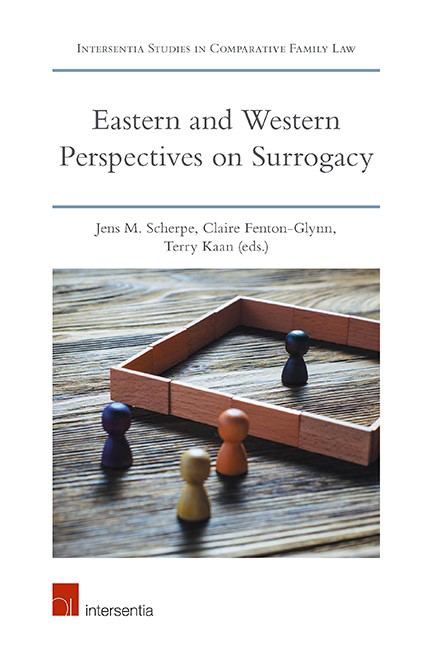Book contents
- Frontmatter
- Preface and Acknowledgements
- Contents
- List of Contributors
- Introduction
- Questionnaire
- PART I WESTERN PERSPECTIVES
- THE PROHIBITIVE APPROACH
- THE TOLERANT APPROACH
- THE REGULATORY APPROACH
- THE FREE MARKET APPROACH
- THE INFLUENCE OF INTERNATIONAL COURTS
- PART II EASTERN PERSPECTIVES
- THE PROHIBITIVE APPROACH
- A TOLERANT APPROACH?
- REGULATION THROUGH PROFESSIONAL MEDICAL BODIES
- FROM FREE MARKET TO REGULATION
- India
- Thailand
- PART III COMPARATIVE PERSPECTIVES ON SURROGACY
- Index
- About the Editors
Thailand
from FROM FREE MARKET TO REGULATION
Published online by Cambridge University Press: 26 June 2019
- Frontmatter
- Preface and Acknowledgements
- Contents
- List of Contributors
- Introduction
- Questionnaire
- PART I WESTERN PERSPECTIVES
- THE PROHIBITIVE APPROACH
- THE TOLERANT APPROACH
- THE REGULATORY APPROACH
- THE FREE MARKET APPROACH
- THE INFLUENCE OF INTERNATIONAL COURTS
- PART II EASTERN PERSPECTIVES
- THE PROHIBITIVE APPROACH
- A TOLERANT APPROACH?
- REGULATION THROUGH PROFESSIONAL MEDICAL BODIES
- FROM FREE MARKET TO REGULATION
- India
- Thailand
- PART III COMPARATIVE PERSPECTIVES ON SURROGACY
- Index
- About the Editors
Summary
GENERAL LEGAL FRAMEWORK
Thailand was a favourite target for international surrogacy arrangements as the country is famous for the quality of its healthcare facilities and personnel. These arrangements tend to avoid the limelight and are low key. However, in recent years there have been a number of very high-profile cases where these arrangements were burst out in the open, creating international uproars which led to the country introducing new legislation designed to stamp out unregulated, commercial surrogacy once and for all. Perhaps the most famous of these high profile cases is the Baby Gammy case. In July 2014, a news story broke where a Thai surrogate mother, Pattaramon Janbua, sought an amount of money to help her critically ill surrogate son, Gammy, who was born with Down syndrome. The baby boy was a twin brother of a baby girl, Pipah, who had already been taken away to Australia by a commissioning Australian couple, who had previously contacted Janbua through agents to act as their surrogate mother. The surrogacy arrangements were done in Thailand and Janbua gave birth to the twins in December 2013. However, during her pregnancy it was discovered that Janbua was carrying twins and one of them, Gammy, had Down syndrome, and also congenital heart and lung disorders. The agency that ran the surrogacy requested that Janbua allow an abortion of the defective foetus, which she refused. The news story caused a huge amount of uproar not only in Thailand but also throughout the world. According to Janbua the commissioning couple took away only the healthy twin girl and left Gammy in Thailand. Janbua became attached to Gammy and tried to raise him along with her own children. However, the cost of raising Gammy became too much for her and soon afterwards the story was publicised in the international media. However, the Australian commissioning couple initially claimed that they did not know about the existence of Gammy because the truth was hidden from them by the agency. Later they conceded that they had known about Gammy's existence at the earliest stage.
- Type
- Chapter
- Information
- Eastern and Western Perspectives on Surrogacy , pp. 499 - 512Publisher: IntersentiaPrint publication year: 2019
- 2
- Cited by

